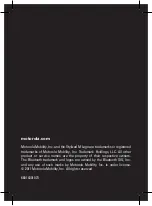
Setup Mode
The Key/Velocity (KEY-VEL) Page
7-15
Crossfade
is designed to be used in tandem with the Reverse Crossfade curve, enabling you to
perform
smooth crossfades between different programs.
Bump
tapers velocity response to resemble a bell curve, so that notes are loudest when your
keystrike velocity is 64. Notes get softer as the keystrike velocity approaches 0 or 127.
The next four velocity curves are Reverse Linear (
Rvrs Linear
), Reverse Expand (
Rvrs Expand
),
Reverse Compress (
Rvrs Compress
), and Reverse Crossfade (
Rvrs Crossfade
). These taper
velocity in reverse of the five curves we just covered. For example, Reverse Linear’s response is
such that striking a key harder will produce a lower volume, striking it softer will produce a
higher volume, and so on. This provides a convenient way to achieve negative scaling, by letting
you set one parameter instead of two.
MIDI V
elocity
127
0
127
Strike Velocity
64
64
Velocity Curve: Linear
Velocity Curve: Bump
Velocity Curve: Crossfade
as you hit the keys harder (increase the
velocity) MIDI velocity increases proportionally
MIDI velocity is greatest at
medium strike velocity
Below medium strike velocity, MIDI velocity is less
than with Linear curve; above medium strike velocity,
MIDI velocity is greater than with Linear curve
MIDI V
elocity
127
0
127
Strike Velocity
64
64
Velocity Curve: Reverse Linear
Velocity Curve: Reverse Crossfade
as you hit the keys harder (increase the
velocity) MIDI velocity decreases proportionally
Below medium strike velocity, MIDI velocity is greater
than with Reverse Linear curve; above medium strike
velocity, MIDI velocity is less than with Reverse Linear
curve
Velocity Curve: Reverse Compress
MIDI velocity is more at
medium strike velocity than Reverse Linear curve
Velocity Curve: Reverse Expand
MIDI velocity is less at
medium strike velocity than Reverse Linear curve
















































